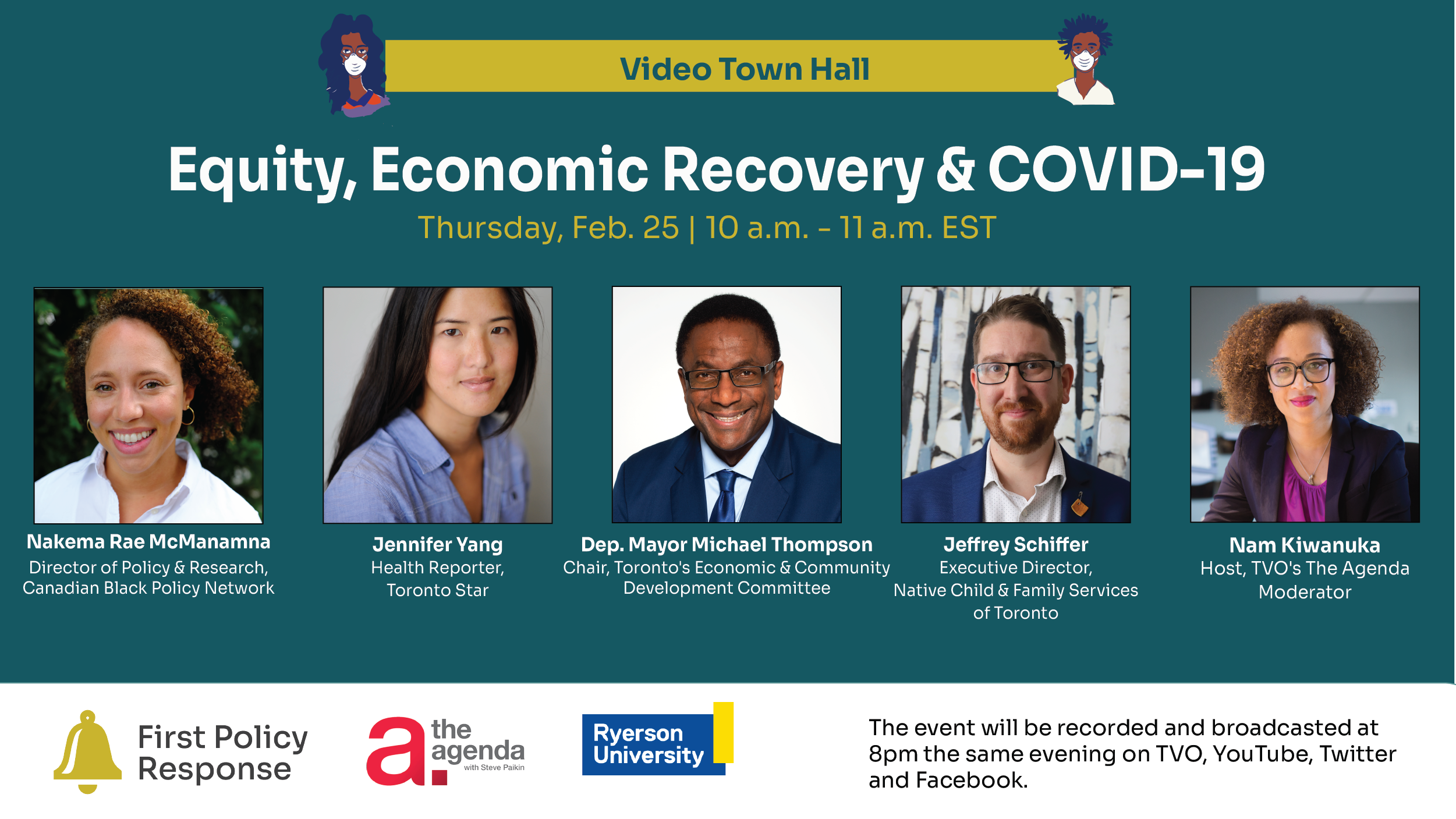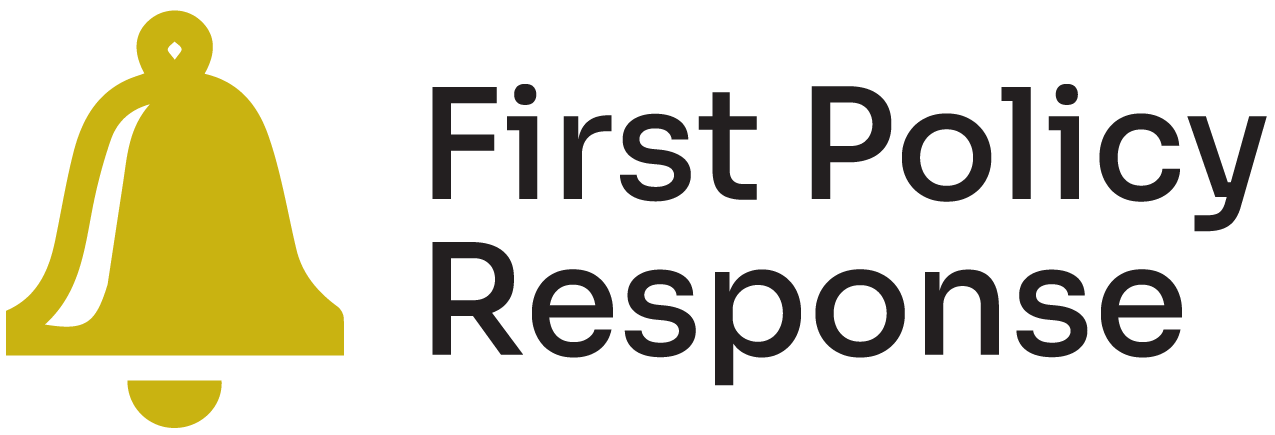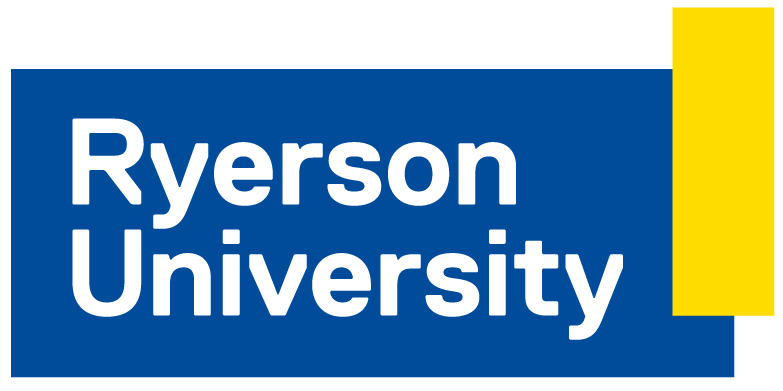
Over nearly a year of the COVID-19 crisis, the pandemic has disproportionately affected marginalized communities – especially Black, Indigenous and People of Colour. These disparities are prominent in Toronto, as racialized people living in low-income neighbourhoods are overly represented in the number of COVID-19 cases.
First Policy Response hosted a panel discussion on Equity, Economic Recovery & COVID-19 on Feb. 25 to discuss these alarming issues and potential policy solutions. The panel was moderated by Nam Kiwanuka, the host of TVO’s The Agenda, and included Nakema Rae McManamna, director of policy and research for the Canadian Black Policy Network; Jeffrey Schiffer, executive director of Native Child & Family Services of Toronto; Jennifer Yang, health reporter at the Toronto Star; and Deputy Mayor Michael Thompson, chair of Toronto’s economic and community development committee.
Data shows a connection between neighbourhoods with high COVID-19 case rates and low-income neighbourhoods. These neighbourhoods also include more ethnic and cultural communities, more essential workers, higher population density, and other issues such as lack of appropriate housing, food security and education.
These issues are racial and systemic, long predating COVID-19. The crisis, however, exacerbated these issues and showed how vulnerable these communities are to crises. Schiffer noted that these communities – particularly Indigenous residents – already face a “shadow pandemic”: a confluence of challenges “related to mental health, and in some cases, substance abuse and family violence.” McManamna said in the Black communities where she works, shocks have a “make-it-or-break-it” effect. Before the pandemic, these shocks were felt at the individual level – such as community violence or a death in the family – inspiring community members to care for each other in times of crisis. However, COVID-19 has been a bigger shock felt across the entire community, restricting their ability to gather and support each other because of the lockdowns.
Many in these communities work in low-wage, essential jobs. For example, Yang said the Mount Olive neighbourhood in northwest Toronto has one of the highest proportions of manufacturing jobs in the city. She notes that many are getting infected at work, bringing the virus home and infecting their families. She cited paid sick leave as a policy that has been effective in other jurisdictions, with documented decreases in COVID-19 rates.
McManamna and Schiffer mentioned that vaccine hesitancy, rooted in historical trauma, is an ongoing issue in Black and Indigenous communities that could hamper efforts to curb the virus. Indigenous people are cognizant of historical “experimentation at the hands of settler medicine,” Schiffer said. “This is not the first pandemic that Indigenous people on Turtle Island have experienced and there’s a lot of intergenerational trauma about historical pandemics that have impacted communities.”
Similarly, though the data shows that neighbourhoods with predominantly Black residents have high rates of infection, McManamna said these communities are skeptical about establishing testing centres in their neighbourhoods because they are already heavily surveilled by police and child welfare intervention authorities.
Instead, panellists said, governments at all levels must work with grassroots community organizations to challenge misinformation and alleviate vaccine hesitancy. McManamna cited the example of a group of Somali mothers in Regent Park who have been combatting vaccine hesitancy in their community. Thompson recognized this need for partnership and said Toronto has been increasingly working with grassroots organizations in its public health efforts.
The panellists agreed that the government response to the pandemic should be “bottom up” rather than “top down,” and should include everyone in building success and prosperity. Speaking about the Black community, McManamna said, “We are the ones on the front lines doing this work and, as a result, I think we are the ones who should be involved in the policy solutions.” For Indigenous people, Schiffer called on all levels of Canadian government to engage “together on a nation-to-nation basis with Indigenous governments . . . urban Indigenous organizations and collectives . . . [and] elders and knowledge keepers.”
The consensus was that for true economic recovery to happen, equity and reconciliation have to be front and centre.





